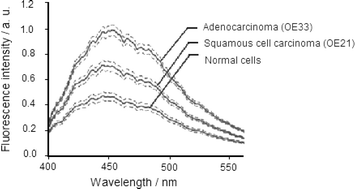Ultraviolet-induced autofluorescence characterization of normal and tumoral esophageal epithelium cells with quantitation of NAD(P)H
Abstract
Cellular autofluorescence was characterized in normal human esophageal cells and in malignant esophageal epithelial cells. The study was performed under excitation at 351 nm where the cell fluorescence is mainly due to the reduced


 Please wait while we load your content...
Please wait while we load your content...